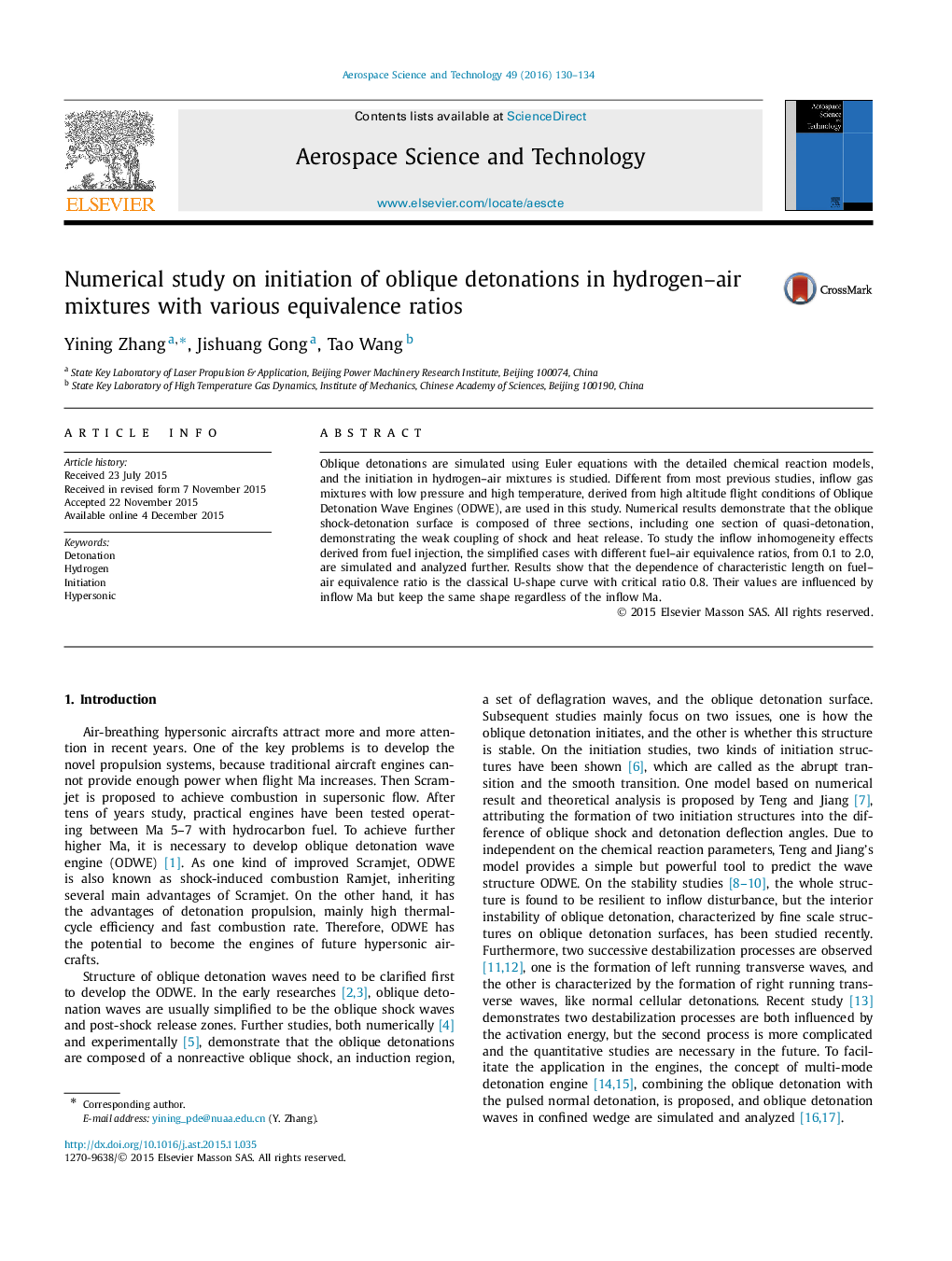| Article ID | Journal | Published Year | Pages | File Type |
|---|---|---|---|---|
| 1717739 | Aerospace Science and Technology | 2016 | 5 Pages |
Oblique detonations are simulated using Euler equations with the detailed chemical reaction models, and the initiation in hydrogen–air mixtures is studied. Different from most previous studies, inflow gas mixtures with low pressure and high temperature, derived from high altitude flight conditions of Oblique Detonation Wave Engines (ODWE), are used in this study. Numerical results demonstrate that the oblique shock-detonation surface is composed of three sections, including one section of quasi-detonation, demonstrating the weak coupling of shock and heat release. To study the inflow inhomogeneity effects derived from fuel injection, the simplified cases with different fuel–air equivalence ratios, from 0.1 to 2.0, are simulated and analyzed further. Results show that the dependence of characteristic length on fuel–air equivalence ratio is the classical U-shape curve with critical ratio 0.8. Their values are influenced by inflow Ma but keep the same shape regardless of the inflow Ma.
